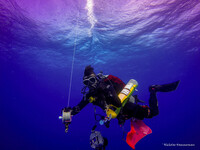Blog:
An interview with Jaaziel García-Hernández
2020, November 24
Posted by Veronica Radice
I am interested in studying the biodiversity of coral reefs, with emphasis on marine sponges inhabiting sciophilous environments (caves, caverns, overhangs, coral rubble) within shallow and mesophotic coral reefs. I am also interested in ecological interactions between sponges and other marine organisms (i.e., corals, ascidians, fish, and zoantharians), as well as understanding the evolutionary history (biogeography, systematics, speciation and morphological evolution) of calcareous sponges and their ecological response with regards to climate change within tropical coral reef ecosystems.
Early Career Scientist: Jaaziel García-Hernández
How do you pronounce “mesophotic” – ‘mee-so’ or ‘meh-so’ -photic?
‘meh-so’ all the way
Are you more interested in charismatic megafauna or scouring the benthos for cool creatures?
Who doesn’t enjoy getting hit by Millepora while scouring the benthos? jajaa but yes, you’ll definitely catch me closer to the benthos, exploring crevices, overhangs, caverns, and caves for the tiny TINY ‘stuff’.
What is your primary research interest, and how does it link with the mesophotic zone?
I’m a PhD student at the University of Puerto Rico-Mayagüez, Department of Marine Sciences, Marine Genomic Biodiversity Laboratory under Professor Nikolaos Schizas (schizaslab.com). At the core, I am driven by curiosity of our natural world. One of my goals is to help understand the overall invertebrate biodiversity of coral reefs before we lose it. I am an aspiring sponge taxonomist and ecologist, thus, my primary research interest revolves around Porifera, studying diversity, diseases, phylogeny, taxonomy, inter/intra-specific associations with other organisms across shallow and mesophotic coral reefs.
Describe the location of your main (or most interesting) study site and how it fits in with your research questions.
I’m grateful to have had the opportunity to study some beautiful and interesting coral reefs from other islands in the Caribbean (Thank you Naturalis Biodiversity Center crew!), but my home base is Puerto Rico. Here, I’m primarily studying shallow and mesophotic coral reefs off the southwestern part of the island. Luckily, our research station (Isla Magueyes) is strategically located within the La Parguera Natural Reserve, allowing us to easily access and study different ecosystems, such as mangroves, seagrass beds, and coral reefs.
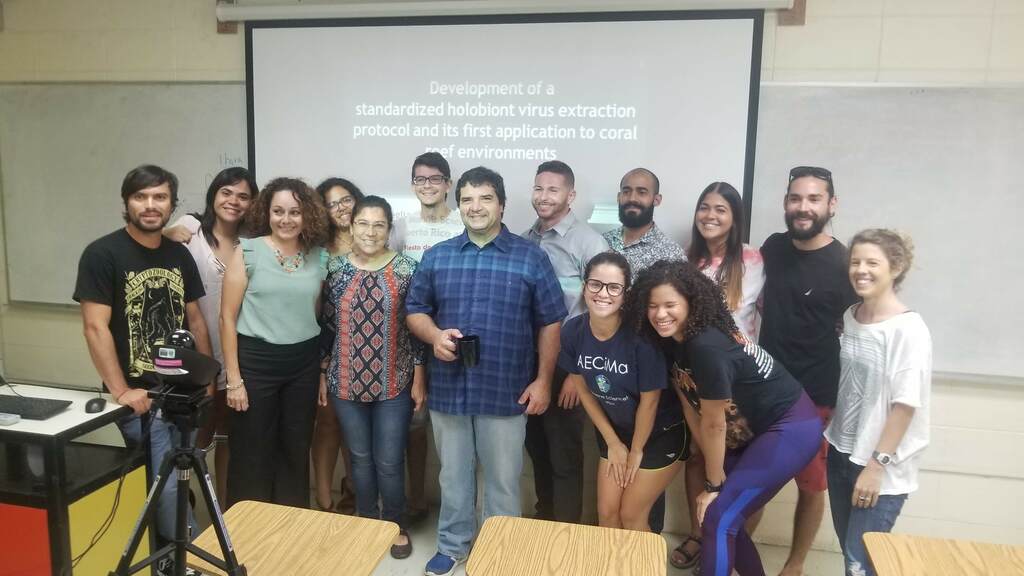 The Schizas Lab, based at Isla Magueyes, La Parguera.
(C) Monica Alfaro
[CC BY-NC 4.0]
The Schizas Lab, based at Isla Magueyes, La Parguera.
(C) Monica Alfaro
[CC BY-NC 4.0]
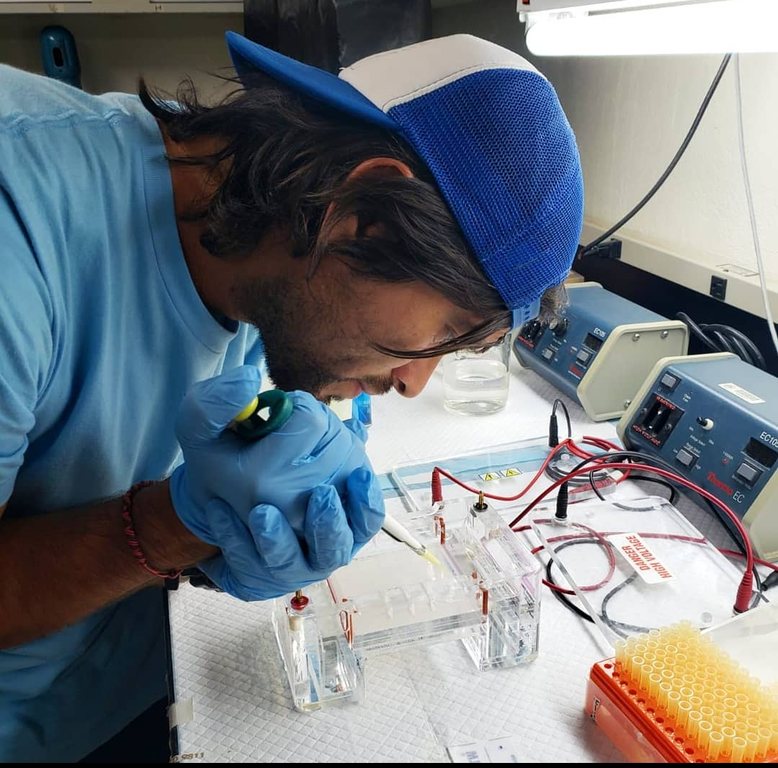 Loading DNA into an agarose gel (Electrophoresis)
(C) Beatriz
[CC BY-NC 4.0]
Loading DNA into an agarose gel (Electrophoresis)
(C) Beatriz
[CC BY-NC 4.0]
What is your primary means of accessing mesophotic depths to conduct your research (e.g. ROV, SCUBA, rebreather, submersible) and what were the main challenges to overcome?
At the moment, I’m accessing upper mesophotic depths through scuba. Ideally, I would be using my Inspiration CCR unit but it’s not possible due to lack of funds. Besides all of the serious issues that arise while diving CCR, the main challenge that I’ve had to overcome while studying mesophotic coral reefs for my research is allocating funds to pay for the research vessel to reach our sites.
What do you remember from your very first exposure to coral reef or mesophotic fieldwork?
This question takes me back to my undergraduate years at the University of Hawaii at Hilo. There, for my senior thesis project, I compared the biological activity of shallow and mesophotic coral reef Hawaiian sponges (see hawaiisponges.com). Although I did not collect the mesophotic sponges (I would like to thank the late Dr. John Rooney and the crew of the HURL PISCES IV & V for the samples), I did collect the shallow specimens, an endeavour which made me fall in love with this group. I also want to thank Dr. Anthony Wright, Dr. Nicole de Voogd, Dr. Kehau Hagiwara, Mauritius V. Bell, Dr. Steven Colbert, Dr. Marta deMaintenon, Dr. Jason Adolf, and Dr. Monica Alfaro (UPRM), for their guidance during those early years of my career, which have led me down this path.
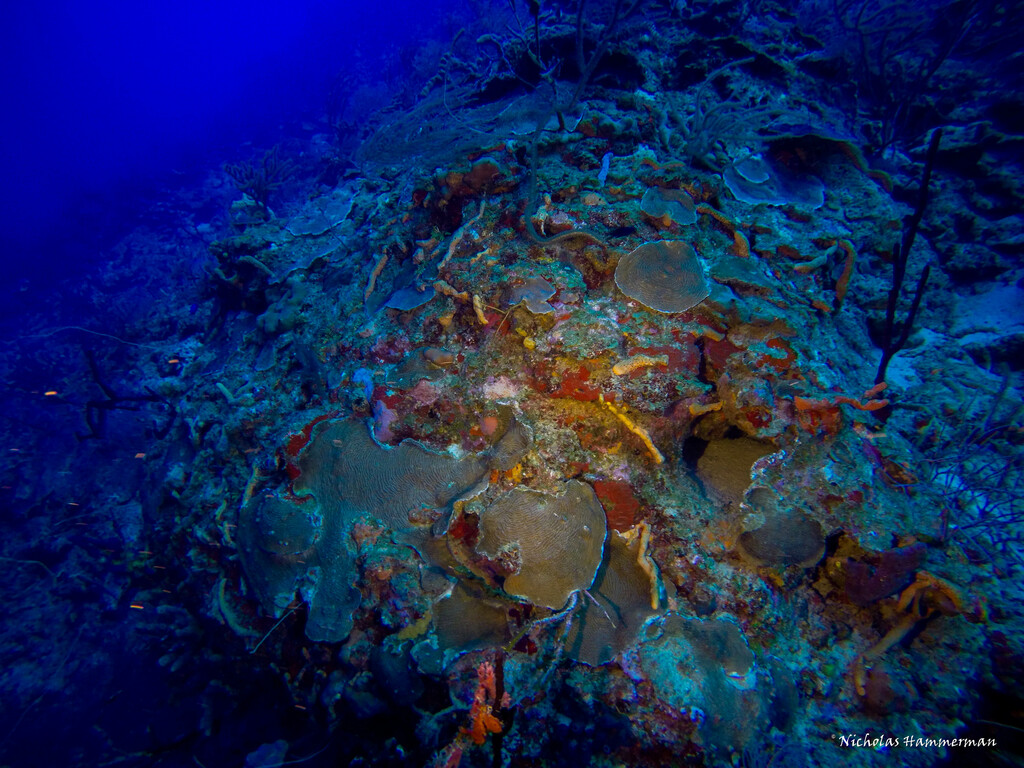 A beautiful scenery of a upper mesophotic coral reef site at La Parguera Natural Reserve. Dive buddies Nick Hammerman, Phillip Sanchez, Milton Carlo
(C) Nicholas Hammerman
[CC BY-NC 4.0]
A beautiful scenery of a upper mesophotic coral reef site at La Parguera Natural Reserve. Dive buddies Nick Hammerman, Phillip Sanchez, Milton Carlo
(C) Nicholas Hammerman
[CC BY-NC 4.0]
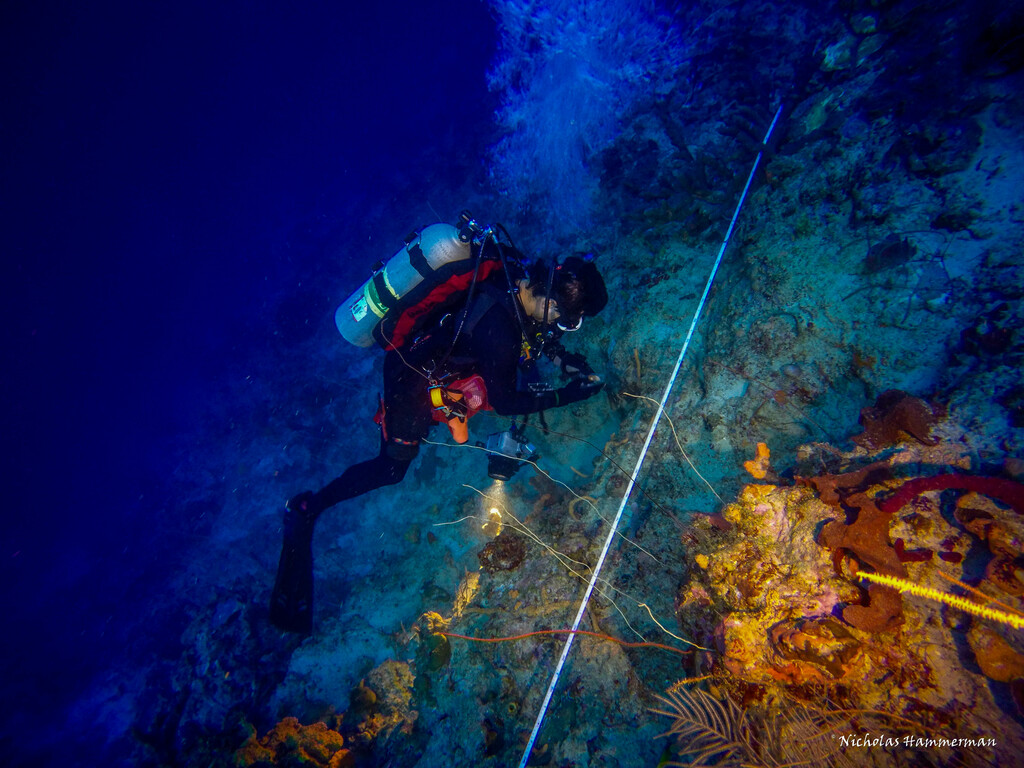 Collecting sponges along a transect at 45 m depth at Guanica Biosphere Reserve. Dive buddies Nick Hammerman, Phillip Sanchez, Milton Carlo
(C) Nicholas Hammerman
[CC BY-NC 4.0]
Collecting sponges along a transect at 45 m depth at Guanica Biosphere Reserve. Dive buddies Nick Hammerman, Phillip Sanchez, Milton Carlo
(C) Nicholas Hammerman
[CC BY-NC 4.0]
What new skill(s) have you learned during your research and what is one thing (skill, program, advice, etc.) that you wish you learned earlier in your science journey?
At the time, learning to dive CCR was extremely frustrating. In particular, dealing with buoyancy. I still have nightmares about that jajaa. Ultimately, I wish I had the funds to finish my CCR training so that I can fully incorporate this technology to study these deeper reefs.
How do you keep current with an endless stream of research coming out (or any favorite science website or blogs that you follow)?
Honestly, I detest social media. I tend to stay away from it. I guess Twitter would be the platform I exploit to keep up with new research being published. I would like to throw out there the Lex Fridman podcast, I’m currently hooked on the conversation he had with the philosopher and social psychologist Dr. Sheldon Solomon.
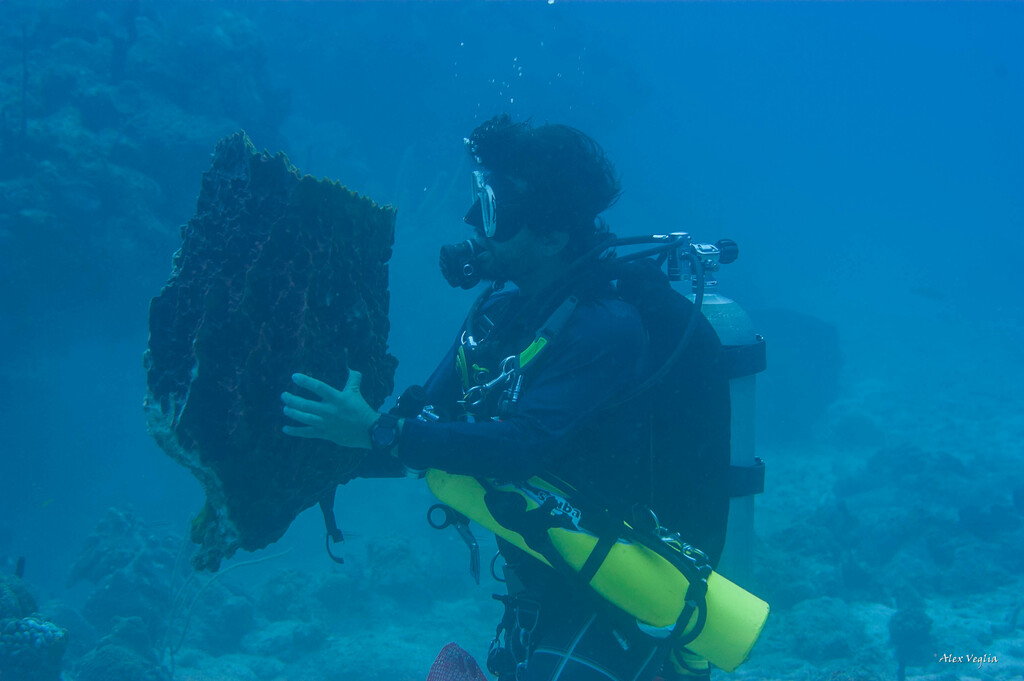 Giving this Xestospongia muta a talk on how it should not be rolling around a sandy bottom.
(C) Alex Veglia
[CC BY-NC 4.0]
Giving this Xestospongia muta a talk on how it should not be rolling around a sandy bottom.
(C) Alex Veglia
[CC BY-NC 4.0]
